Salzburg offers picturesque views, fascinating history
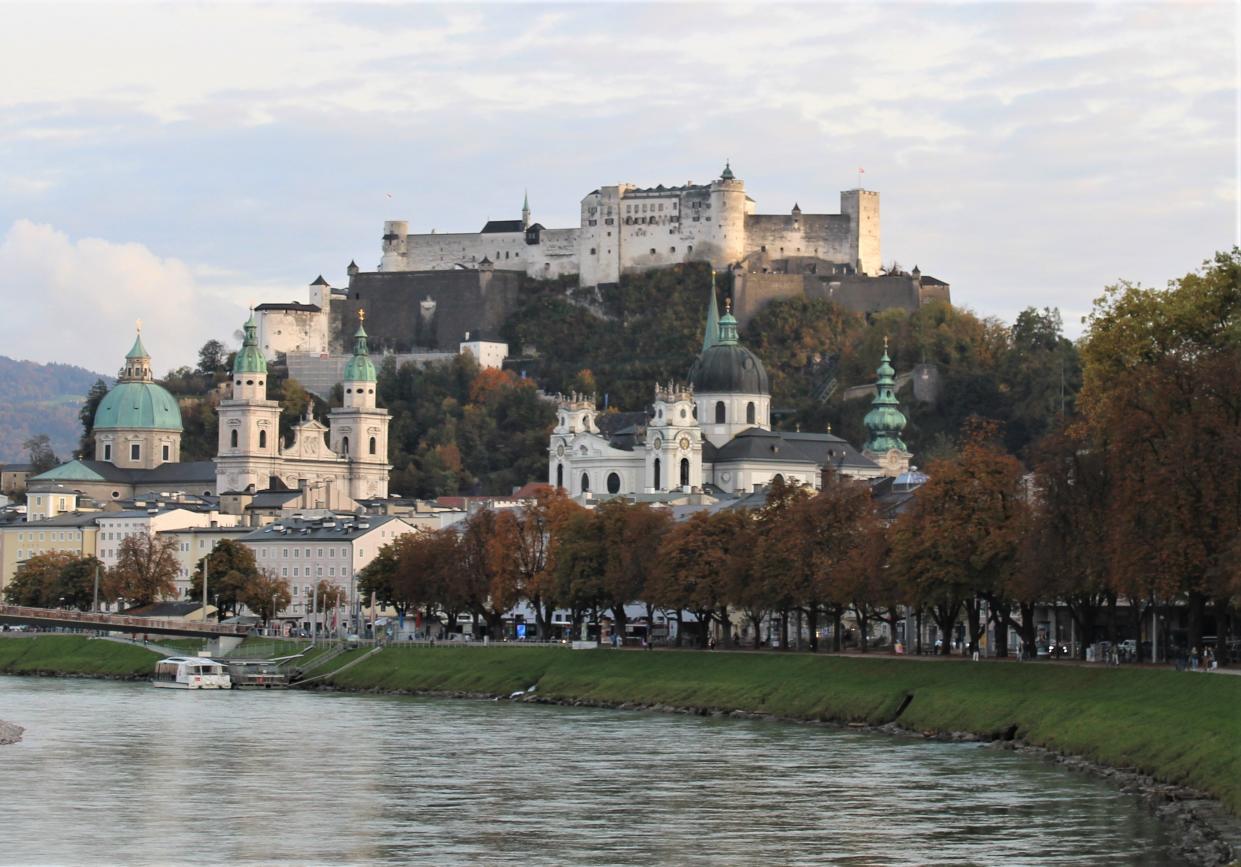
- Oops!Something went wrong.Please try again later.
When my lovely wife, Laureen, and I visited the city of Salzburg in Austria this past fall, there were abundant places to visit.
As we walked the city marveling at this and that, many oohs and aahs were heard from each of us.
Salzburg is a gorgeous city on the border with Germany, and the history is rich for history-type nerds to take advantage of.
Count us in.
The lands surrounding modern-day humans have inhabited Salzburg since the 5th century BC. Traces of human settlements have been linked to the Celts.
Very smart archaeologists learned this when they found a treasure trove of Byzantine trading cards stuck in an ancient wine jar featuring the emperor Basiliscus.
“Look at the jersey Basilicas is wearing,” one dirt digger said to the other.
“Team Constantinople, so cool,” replied a trowel holder.
Hundreds of years later, the Roman Empire took over the area and named the city Juvavum. The settlement became an important town since it was in the far reaches of the Roman Empire. But when that empire collapsed, Juvavum nearly became deserted in the 7th century AD.
In 696, the area became an Episcopal see, which is the opposite of an Episcopal no-see-um. Also, a region or diocese over which an Episcopalian bishop rules.
Rupert, the Bishop of Worms, an actual city located along the western bank of the River Rhone in Germany, was asked to become the first Bishop of Salzburg.
Rumor had it that Rupert, later to become Saint Rupert, was hesitant to accept the offer but later acquiesced.
“I had to go as ordered by the church,” he was heard stating. “If not, my refusal may have opened a large can of Worms.”
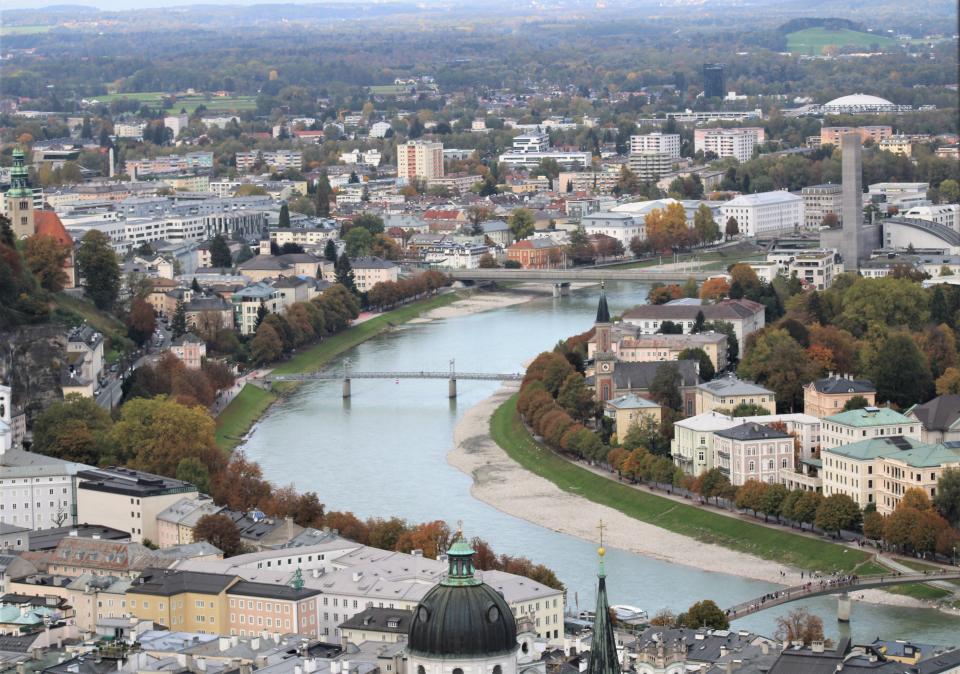
With the arrival of Rupert, the town began to flourish, especially with the finding of vast amounts of salt in the nearby lands.
Salt was a commodity that everyone appreciated – it was as precious as gold.
“How is your mutton?” one early diner asked his friend.
“Tastes better sprinkled with salt than gold,” the friend responded.
There were so many salt mines that Rupert changed the name of Juvavum to Salzburg, which is translated as Salt Castle.
That and no one could pronounce Juvavum correctly.
Rupert’s original roots were that of a Christian Missionary, and even though Salzburg was becoming a very wealthy locale, he never forgot his roots.
Though not much was written about Rupert, he was known to visit smaller communities spreading the word of God and helping people in their daily struggles with prayer and counseling.
Thus, he was later canonized as a Saint in the Catholic Church. Rupert died on Easter Sunday, 710 AD.
Because Salzburg continued to prosper, there grew a fear that outsiders may decide to attack and take the wealth of the salt mines and the townsfolk.
Archbishop Gebhard von Helfenstein started the construction of a military fortress in 1077 upon the highest hill in the vicinity of Salzburg. From there, any potential enemies could be easily seen by the soldiers at the fort sitting nearly 700 feet above the nearby ‘old city’ of Salzburg.
It started like many old forts as simply a fenced-in area for soldiers to reside in, but through the years, it turned into a formidable white-stoned fortress that became one the largest medieval castles in Europe.
There is controversy if the entity is a fortress or a castle. But that didn’t matter to me.
“Look, there is the Hohensalzburg Fortress,” I said to Laureen as we strolled through the streets of the old city.
Small shops lined the narrow walking paths of this ancient town. It was mystical as we trod the cobblestone roads stopping by one unique store after another. The streets were not straight avenues but meandered as if they had a mind.
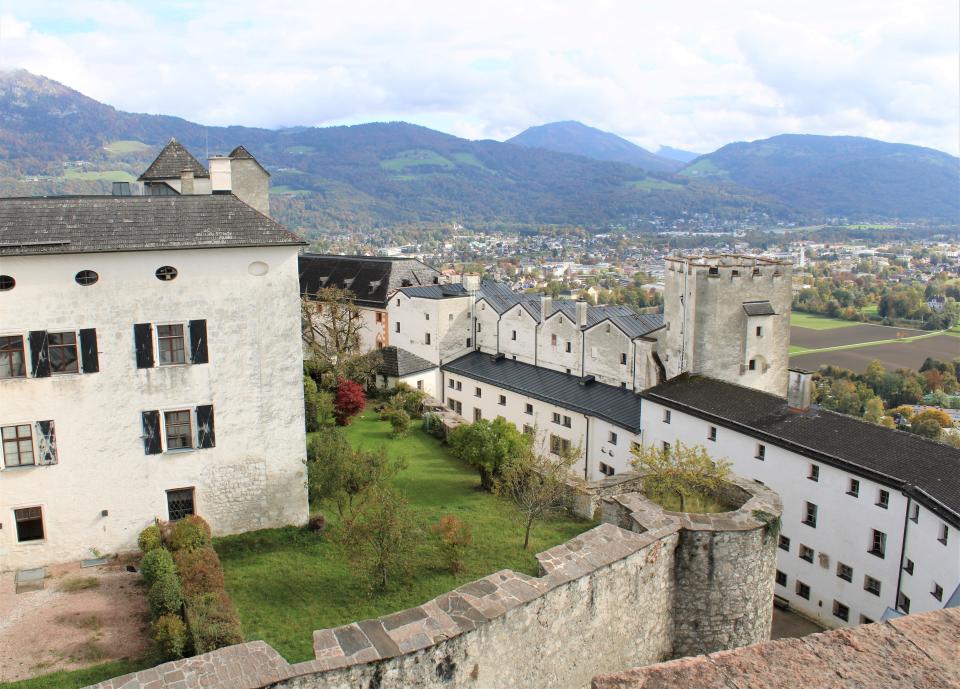
There was the Kirchtag, which has produced handmade umbrellas since 1903. There was the Buchhandlung Hollrigl, the oldest bookshop in Austria, dating to 1594. There was the Kopfberger-Rainer, where Laureen spent a fortune on traditionally-made souvenirs. The Paul Reber & Company was opened a century ago, featuring the famous and famously named hand-rolled Mozart Balls.
Store after store offered anything a tourist or local could visualize.
The Old City is so mystical that many famous films used it as a backdrop.
Movies include the Sound of Music, The Amazing Race, The 10th Kingdom, Season of the Witch, and many more.
The walking experience was marvelous and tiring, so we sat at a small café and had a coffee and a strudel.
Soon though, we were moving to the fortress looming above us.
Visitors can either walk to the fortress's entrance or, as we did, enjoy a very steep but visually pleasing ride on the funicular, an enclosed gondola on a cable railway.
“You sure you don’t hike up to the fort?” Laureen asked.
I shook my head. “The guidebook states you must be in great shape, like a marathon runner, to venture the winding path to the entrance.”
The truth was, I had eaten two strudels and wanted a nap, not a hike.
It takes one minute to go from ground zero to the entrance to the fort on the tram, and the vistas are stunning. The magic of the old city, the gloriously majestic Alps surrounding Salzburg, and the ever-flowing Salzach river through the entire countryside made me want to break out in song.
Laureen shook her head.
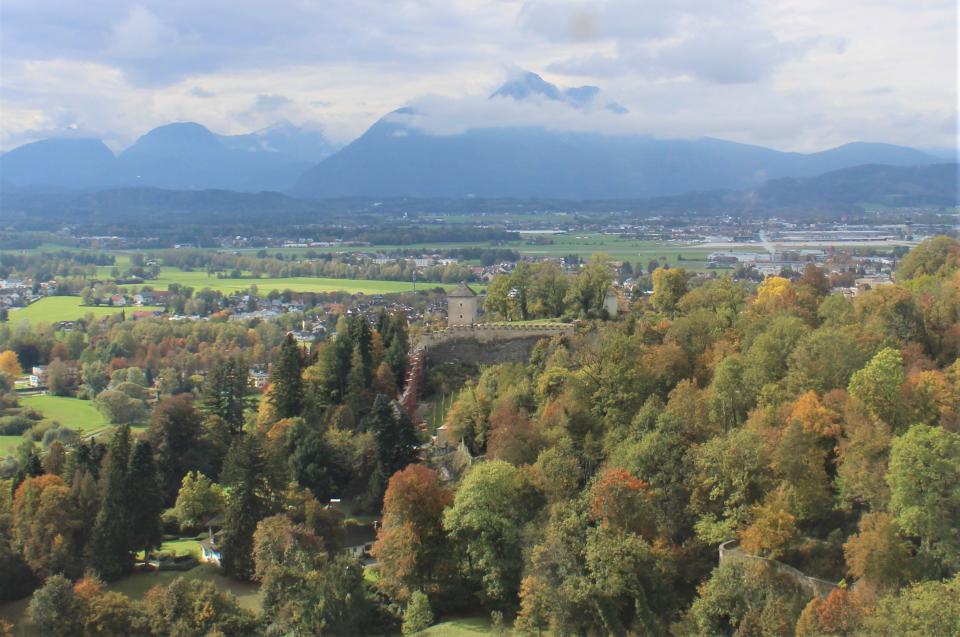
As we entered the nearly eight-acre compound, I was taken aback by what appeared to be a mini-city built upon a high hilltop.
We have visited many castles and forts in our travels, but this place looked like the original inhabitants still resided there.
Cobbled and dirt streets crisscrossed over the grounds, leading to various buildings housing museums, living quarters of the rich and famous, a church, soldiers’ barracks, blacksmith shops, bakeries, candle-making shops, gunpowder storage rooms, civilian abodes, and everything needed for a functioning community.
A water well and cisterns could supply the fort continuously, a granary provided wheat, areas were fenced for growing other edibles, and pens for various livestock could feed the population for months at a time.
This fort was a town in itself.
“This is amazing,” I said.
Laureen nodded. “It’s as though we’ve stepped back in time.”
A quick three hours passed as we traipsed through the room after room inspecting ancient artworks, weaponry, clothing from the fort's early days to the 18th century, furniture from the days when the princes of the church resided here, a torture chamber, and so much more.
Spending time walking along the parapets is a must for any visitor. The view of the Alps is breathtaking, and being high above the beautiful old city leaves a person feeling almost tiny in such a historical and vital place.
So much happened here.
I once had a short story published that dealt with the butterfly effect. If something as small as a butterfly took to wing, history could be changed.
If Mozart’s parents had not moved to Salzburg to have their son born on January 27th, 1756, look what the world may have missed out on.
No classical sounds like the Requiem, Symphony No. 40, Don Giovanni, or any other masterpieces composed by the little boy who ran through the cobbled streets of Salzburg.
One event can change the world.
But I digress.
Neither the fortress nor the city of Salzburg was ever sacked by invading armies. However, when a small force of Napoleon’s army ventured through in 1809, the town surrendered instead of going to battle.
Hohensalzburg was temporarily utilized as a barracks for the French soldiers.
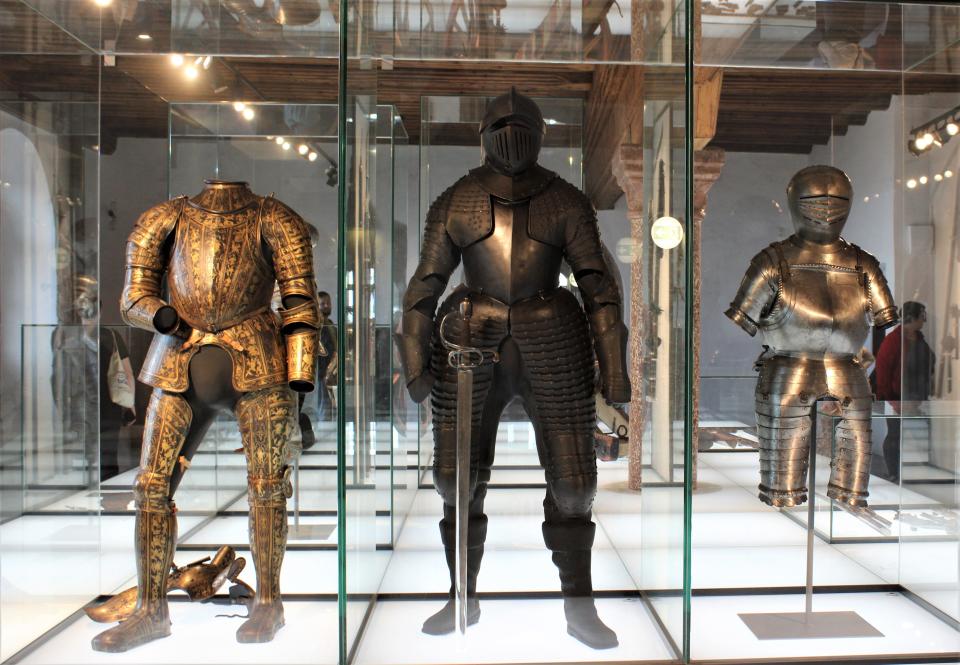
If I recall my history, a tiny group of English soldiers tried to take the fortress but were repelled by the French soldiers looking down at them from the fortifications.
“I don’t want to talk to you anymore, you empty-headed animal food trough whopper. Your mother was a hamster, and your father smelled of elderberries!” yelled the French trooper.
Or was that a scene from Monty Python, In Search of the Holy Grail?
We had a late lunch at the Panorama Restaurant at Hohensalzburg, with an incredible table with an incredible panoramic view (thus the reason for the name) of the Alps to the northwest of Salzburg.
“Good day?” I asked after taking a sip of my Marzen.
“Stunningly good,” Laureen replied.
After lunch, we retraced our steps through the old city and headed toward the Augustiner Brau. In 1621, the Augustinian monks opened up a huge brewery on the outskirts of the ancient city of Salzburg.
Our son-in-law, Justin, told us it was a must-visit on our trip.
It was, and we did.
The day had just gotten better.
John can be contacted at, beyersbyways@gmail.com
This article originally appeared on Victorville Daily Press: Salzburg offers picturesque views, fascinating history

